第3章 THE COMMODITY(1)
The wealth of bourgeois society,at first sight,presents itself as an immense accumulation of commodities,its unit being a single commodity.
Every commodity,however,has a twofold aspect --use-value and exchange-value.[1]
To begin with,a commodity,in the language of the English economists,is "any thing necessary,useful or pleasant in life",an object of human wants,a means of existence in the widest sense of the term.Use-value as an aspect of the commodity coincides with the physical palpable existence of the commodity.Wheat,for example,is a distinct use-value differing from the use-values of cotton,glass,paper,etc.A use-value has value only in use,and is realized only in the process of consumption.One and the same use-value can be used in various ways.But the extent of its possible application is limited by its existence as an object with distinct properties.
It is,moreover,determined not only qualitatively but also quantitatively.
Different use-values have different measures appropriate to their physical characteristics;for example,a bushel of what,a quire of paper,a yard of linen.
Whatever its social form may be,wealth always consists of use-values,which in the first instance are not affected by this form.From the taste of wheat it is not possible to tell who produced it,a Russian serf,a French peasant or an English capitalist.Although use-values serve social needs and therefore exist within the social framework,they do not express the social relations of production.For instance,let us take as a use-value a commodity such as a diamond.We cannot tell by looking at it that the diamond is a commodity.Where it serves as an aesthetic or mechanical use-value,on the neck of a courtesan or in the hand of a glass-cutter,it is a diamond and not a commodity.To be a use-value is evidently a necessary prerequisite of the commodity,but it is immaterial to the use-value whether it is a commodity.Use-value as such,since it is independent of the determinate economic form,lies outside the sphere of investigation of political economy.[2]It belongs in this sphere only when it is itself a determinate form.Use-value is the immediate physical entity in which a definite economic relationship --exchange-value --is expressed.
Exchange-value seems at first to be a quantitatve relation,the proportion in which use-values are exchanged for one another.In this relation they constitute equal exchangeable magnitudes.Thus one volume of Propertius and eight ounces of snuff may have the same exchange-value,despite the dissimilar use-values of snuff and elegies.Considered as exchange-value,one use-value is worth just as much as another,provided the two are available in the appropriate proportion.The exchange-value of a palace can be expressed in a definite number of tins of boot polish.London manufacturers of boot polish,on the other hand,have expressed the exchange-value of their numerous tins of polish in terms of palaces.Quite irrespective,therefore,of their natural form of existence,and without regard to the specific character of the needs they satisfy as use-values,commodities in definite quantities are congruent,they take one another's place in the exchange process,are regarded as equivalents,and despite their motley appearance have a common denominator.
Use-values serve directly as means of existence.But,on the other hand,these means of existence are themselves the products of social activity,the result of expended human energy,materialized labour.As objectification of social labour,all commodities are crystallisations of the same substance.The specific character of this substance,i.e.,of labour which is embodied in exchange-value,has now to be examined.
Let us suppose that one ounce of gold,one ton of iron,one quarter of wheat and twenty yards of silk are exchange-values of equal magnitude.
As exchange-values in which the qualitative difference between their use-values is eliminated,they represent equal amounts of the same kind of labour.
The labour which is uniformly materialised in them must be uniform,homogeneous,simple labour;it matters as little whether this is embodied in gold,iron,wheat or silk,as it matters to oxygen whether it is found in rusty iron,in the atmosphere,in the juice of grapes or in human blood.But digging gold,mining iron,cultivating wheat and weaving silk are qualitatively different kinds of labour.In fact,what appears obJectively as diversity of the use-values,appears,when looked at dynamically,as diversity of the activities which produce those use-values.Since the particular material of which the use-values consist is irrelevant to the labour that creates exchange-value,the particular form of this labour is equally irrelevant.
Different use-values are,moreover,products of the activity of different individuals and therefore the result of individually different kinds of labour.But as exchange-values they represent the same homogeneous labour,i.e.,labour in which the individual characteristics of the workers are obliterated.Labour which creates exchange-value is thus abstract general labour.
If one ounce of gold,one ton of iron,one quarter of wheat and twenty yards of silk are exchange-values of equal magnitude or equivalents,then one ounce of gold,half a ton of iron,three bushels of wheat and five yards of silk are exchange-values which have very different magnitudes,and this quantitative difference is the only difference of which as exchange-values they are at all capable.As exchange-values of different magnitudes they represent larger or smaller portions,larger or smaller amounts of simple,homogeneous,abstract general labour,which is the substance of exchange-value.